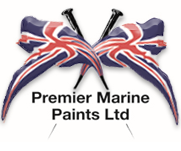Coverage
Yacht and Motor Boat Antifouling Tips
The most likely reason an antifouling system might under-perform, is that the boat-owner applies it too thinly or skips a coat so that the active ingredient is exhausted early.
Clearly to make sure you have the right amount of paint, it is important to be able to assess the underwater area of a hull. Preferably you want to do so in square metres as that’s how most paints are quoted these days.
The formula for doing so is waterline length x (beam + draught) x 0.85 for motor boats, x 0.80 for long keeled yachts and 0.75 for fin keeled yachts.
Most eroding antifouls have a coverage of around 10sqm per litre.
However, as a rougher guide, assuming two coats are required, you could use the following number of tins (2.5 litres):
Length in Ft
Fin Keel Long Keel Motor Boat
20 1 tin 2 tins 1 tin
26 2 tins 3 tins 2 tins
30 3 tins 3 tins 3 tins
35 4 tins 4 tins 4 tins
38 4 tins 5 tins 4 tins
44 5 tins 5 tins 5 tins
51 6 tins 6 tins 5 tins
nb: this table should be used as a guide only as hull shapes vary considerably and it’s worth erring on the side of caution.
- Keep cans of paint indoors until you need them. The paint will be easier to apply if it is not too cold.
- Use good quality masking tape to mask off the waterline. A cheaper one could allow paint to creep underneath for a messy finish and might not peel off cleanly.
- Choose a dry day for painting. A damp atmosphere can adversely effect adhesion.
- Always stir the paint well. And then stir it again before tipping into the paint tray.
- Use either a brush or a roller to apply it, but not too large a roller. A short mohair one is ideal (or sponge roller in the case of Premier antifouling which can also be sprayed).
- Work the brush or roller in a criss-cross pattern, and don’t spread the paint too thinly. Apply an extra coat to all leading and trailing edges, such as the waterline, bow, keels and rudders where applicable.
- Do not paint over anodes or transducers
